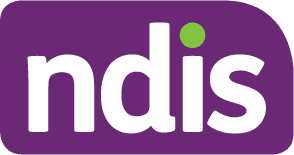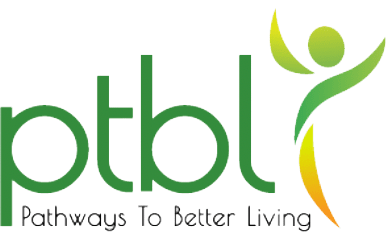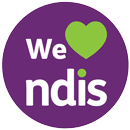Pathways to Better Living Pty Ltd – Medication Policy
Introduction
This policy provides guidance on the best use of medications including its storage, administration and documentation, promotes improved health outcomes for participants, and minimises risks of inappropriate use or harm. As some medications are potentially dangerous, all medications must be treated with due care and safety.
To reduce the likelihood of medication errors during administration, the six rights of medication are recommended when administering all types of medication. The six rights are:
- Right person
- Right medication
- Right dose
- Right time
- Right route
- Right documentation
- Applies when participants we support require medication
- Applies to all workers involved in sourcing medication and supporting participants to take medication
Definitions
| Term | Description |
| Child | A person under the age of 16 years |
| DAA, dosage administration aid | A dosage administration aid (DAA) is a well-sealed, tamper evident device that allows individual medicine doses to be organised according to the prescribed dose schedule. A Webster-Pak is one example of a commonly used DAA which is a blister pack type packed at the pharmacy. Using a DAA can help reduce the likelihood of medication errors. |
| Medication error | A medication error is any preventable event that may cause or lead to inappropriate medication use or patient harm while the medication is in our control or the control of a participant. Medication errors include: Incorrect packaging or labellingIncorrect storageIncorrect dosageMissed dosageWrong route of administrationAdministration to the wrong personAdministration of the wrong medicationSplit or dropped medicationA participant refusing their medication |
| Medicine Schedules and availability (see Scheduling) | Schedule 2 (pharmacy medicine) – pharmaceuticals supplied from a pharmacy. Schedule 3 (pharmacist only medicine) – pharmaceuticals which must be supplied by a pharmacist in a pharmacy. Schedule 4 (prescription only medicine) – medicines that can only be obtained with a prescription. This category is for substances for which the use or supply should be by or on the order of persons permitted by law to prescribe (a medical officer or nurse practitioner) and should only be available from a pharmacist on prescription. Schedule 8 (controlled drug) – drugs of addiction. Medicines that require restriction of manufacture, supply, distribution, possession and use to reduce abuse, misuse and physical addiction. |
| PRN, pro re nata | A Latin phrase which means “as needed” |
| Scheduling | Scheduling is a national classification system that controls how medicines and poisons are made available. Medicines and poisons are classified into Schedules according to the level of regulatory control over the availability of medicine or poison required to protect public health and safety. |
| Young person | A person over the age of 16 years but under 18 years. |
Medication safety
- Follow rules of hand hygiene before administering medications – this includes the use of an alcohol hand rub or a soap and hand wash
- Before administering a medication to a patient, check expiry date of medication to ensure in-date status
- Prescribed or routine medications must be packaged in a DAA or its originally dispensed packaging (if not practicable for a DAA)
- Do not dispense any medication from a broken DAA where there is evidence of tampering
- Medications which must be in their original dispensed packaging (not a Webster-Pak) include:
- Liquids and syrup
- Granules and powders
- Creams and ointments
- Nasal sprays, nebulisers and inhalers
- Before crushing any medication, check with the prescribing doctor or pharmacist prior as crushing some medications for administration can reduce efficiency or make the medication poisonous
- Medications can be dangerous and can cause adverse side effects or reactions – workers need to be alert for abnormal reactions, allergies, hypoxia, behavioural changes or loss of consciousness
- Always check a person’s allergy or sensitivity status prior to administering medication
- If conditions or reactions escalate, attend to participant, notify a health professional, or call Triple Zero (000) in event of emergency
Medication documentation
- All medications must only be used in accordance with their prescribed instruction
- Each prescribed medication requires a doctor’s medication print out or completed medication chart with the following details:
- Name, address and date of birth of the participant
- Any known allergies of the participant
- Name of medication
- Dosages as determined by the prescribing doctor
- Times of administration
- Route of administration
- The reason why it has been prescribed
- Any specific direction for use
- PRN (as needed) medications must specify conditions for use
- Name, contact number and signature of prescribing doctor
- BD – twice a day, TDS – three times a day, QID – four times a day, Mane – morning, Nocte – night
- Cessation date of episodic or ‘short course’ medication
- Commencement date for medication to begin
- Pharmacy contact details (where it was packaged)
Medication consent
- All participants are encouraged and supported to manage their own medication and consent for its use
- If we are administering, written consent is required before a participant can receive medication, except in an emergency
- Written consent by a substitute decision maker is required if we are to administer medication to a participant who is unable to consent themselves
- Written consent by a parent is required if we are to administer medication to a participant who is a child
- Young people and children over 14 years should be supported to consent for medication use themselves if they are considered to have an appropriate level of understanding.
Medication administration
- S4 and S8 medication must only be administered by authorised persons – this is a legal requirement (except for participants who self-administer)
- Authorised persons administering drugs of addiction must be trained in the administration of medication
- Medication must only administered to one participant at a time
- A pill dispenser device such as a Pil-Bob should be used to dispense pills for administration from a DAA such as a Webster-Pak.
Storage of prescription-only and restricted medications
Directives in this section are legal requirements for storing S4 and S8 medications. The Australian Government Department of Health has strict guidelines for these medications which include storage, periodic inventories, drug register entries, loss of drugs, order and supply, administration, destruction of old stock/unwanted stock.
- All S8 medications are to be kept in a locked cupboard of approved construction and firmly fixed to the premises (S4 and S8 medications cannot be kept in a fridge)
- Central stock of S4 and S8 medications must be recorded in a drug register of all stocks received and stock transferred
Storage of over-the-counter medications
Directives in this section are regarding the storage of S2 and S3 medications.
- All medications we are responsible for must be stored in a locked draw, cabinet or medication fridge in a secure location
- Any non-active medication must be stored in a separate compartment labelled “non-active” from a participant’s current or active medication
- A risk assessment and appropriate action should be undertaken if it is identified that the security and storage of medications presents a potential risk to the participant, worker or organisation
Medication disposal
- Medication for disposal is any medication that is expired or no longer required – this must be returned to the pharmacy
- Medication for disposal must not be:
- Placed in rubbish bins
- Washed down the sink
- Flushed down the toilet
- Sharps disposal containers should be securely stored either in a locked room or lockable drawer or cabinet
Medication errors
- Follow the report incident process for any medication errors
- Follow the report incident process if a participant refuses their medication
Medication responsibilities for workers
- Attend required training for supporting participants with medications
- Ensure the safe storage of medications
- Ensure the safe disposal of expired or contaminated medications and medications no longer required
- Be familiar with the participant’s known behaviours in order to understand their usual behavioural patterns and report any unusual behaviours or adverse side effects
- Promptly report any concerns, issues or incidents to key management personnel
- Seek advice from key management personnel if ever in doubt about their own medication knowledge, skills or capabilities
Medication responsibilities for key management personnel
- Ensure all workers involved in supporting participants with medications are appropriately trained and kept up to date with relevant legislation and professional standards
- Provide adequate resources to enable training, assessment and reassessment of workers involved in supporting participants with medications
- Ensure personnel work within their scope of practice
- Provide appropriate support, direction and referral to workers in the event of medication concerns, issues or incidents
- Two audits per year are required for each S4 and S8 drug register
- Any incident involving S4 and S8 medications must be reported to the appropriate key management personnel, pharmacist, Department of Health, and police



